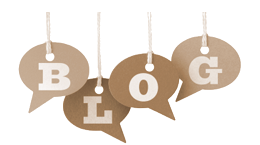When you need funds for remodeling your home, sending your kids to college, or even a big vacation, it’s tempting to tap into the equity you’ve build in your home. It seems like more homeowners are rushing to take out a home equity line of credit, or HELOC, before interest rates climb. In fact, 347,875 homeowners took out HELOCs in the United States in the first quarter of 2018 alone. That’s up by 18% from the previous quarter and up 14% from the same time a year ago. The Federal Reserve is expected to raise interest rates once or twice more this year, which could be responsible for the higher number of homeowners taking advantage of their equity sooner rather than later. So is now the right time for you to borrow against your home? Here’s what you should consider first.
How a HELOC Works
A home equity line of credit works sort of like a credit card. It’s not like borrowing a lump sum and depositing cash into your bank account as you would with other loans. You’re given a line of credit with a limit (based on how much your home is worth, how much you owe on your mortgage, your credit score, etc.). You can then tap into that line of credit as little or as often as you need or want to. You might be given a checkbook and/or a credit card that can be used whenever you desire. In most cases, you only pay interest on the loan for the first ten years, which is known as the draw period. After that draw period is up, you begin to pay back both the principal and interest.
The Pros
HELOCs are very flexible and have lower interest rates than other typical loans. You can use the money to make home improvements, increasing your home’s value even further; start a business; make another investment; pay off student loans or avoid them altogether by paying for schooling; pay for a wedding or a fancy vacation; and much more. One of the best parts of a home equity line of credit is that if you’re not actively using it, then you’re not paying for it. You could choose to get a HELOC and just have it available for emergencies, and as long as you don’t use it, you won’t owe a dime. If you do end up using it, you only need to take out as much money as you actually need. There’s no need to pay interest on a lump sum that you might not even use. And speaking of interest, the rates on HELOCs are a good bit lower than traditional loans or credit cards.
The Cons
Though the interest rates are generally lower on a HELOC, they are variable. The rate you receive on your closing date might be lower than what you’ll pay in five years. It’s determined by the Prime Rate and an index decided by lenders, which is an ever-changing number. There are also certain eligibility requirements that must be met to obtain a HELOC. In addition to having enough home equity built up, you need to have a good loan-to-value ratio on your property (including any tax or contractor liens), a good credit history, and a good debt-to-income ratio. These are all typical requirements for any loan, including your original mortgage, so you should be familiar with them.
Whenever You’re Ready…
Make sure to talk to multiple banks and lenders before you apply for a HELOC. Even if you’ve banked with the same institution for 25 years, we always suggest shopping around. Compare interest rates, terms, flexibility, fees, and other costs before you settle on a lender. Remember: as with all loans and business dealings, if it sounds too good to be true, it probably is. Go through the loan documents with a fine-toothed comb and ask all your questions—even the ones you might think are insignificant. Be 100% certain of all terms before you sign anything.
Proceed with Caution
Keep in mind that when you borrow against your home’s equity, you’re literally using the roof over your head as collateral. You’ll be repaying the HELOC in addition to your regular mortgage. Go into it with your eyes wide open and your “responsible spender” cap on. Be extra cautious about how you spend this money and how you’re going to pay it back. Be sure to read any fine print and pay attention to repayment terms and fees. There might not be any closing fees on your HELOC, but there might be appraisal fees or annual fees, among others, so be sure to ask. When it comes to repayment, have a plan to pay back more than the minimum monthly amount to avoid rising interest rates.
No one can really tell you if a home equity line of credit is right for you. Consider the above factors and make a well-informed, careful decision on whether or not now is the time for you to tap into the equity you’ve built up with your home.







